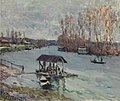
Pierre-Auguste Renoir was a French artist who was a leading painter in the development of the Impressionist style. As a celebrator of beauty and especially feminine sensuality, it has been said that "Renoir is the final representative of a tradition which runs directly from Rubens to Watteau."

The Musée d'Orsay is a museum in Paris, France, on the Left Bank of the Seine. It is housed in the former Gare d'Orsay, a Beaux-Arts railway station built between 1898 and 1900. The museum holds mainly French art dating from 1848 to 1914, including paintings, sculptures, furniture, and photography. It houses the largest collection of Impressionist and post-Impressionist masterpieces in the world, by painters including Berthe Morisot, Claude Monet, Édouard Manet, Degas, Renoir, Cézanne, Seurat, Sisley, Gauguin, and van Gogh. Many of these works were held at the Galerie nationale du Jeu de Paume prior to the museum's opening in 1986. It is one of the largest art museums in Europe.
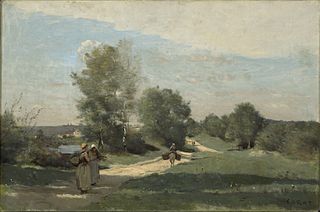
The Barbizon school of painters were part of an art movement toward Realism in art, which arose in the context of the dominant Romantic Movement of the time. The Barbizon school was active roughly from 1830 through 1870. It takes its name from the village of Barbizon, France, on the edge of the Forest of Fontainebleau, where many of the artists gathered. Most of their works were landscape painting, but several of them also painted landscapes with farmworkers, and genre scenes of village life. Some of the most prominent features of this school are its tonal qualities, color, loose brushwork, and softness of form.
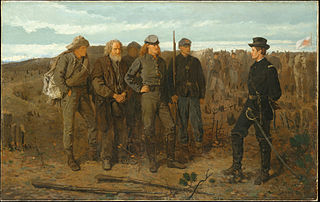
Events from the year 1866 in art.
Events from the year 1869 in art.
Events from the year 1871 in art.
Events from the year 1875 in art.
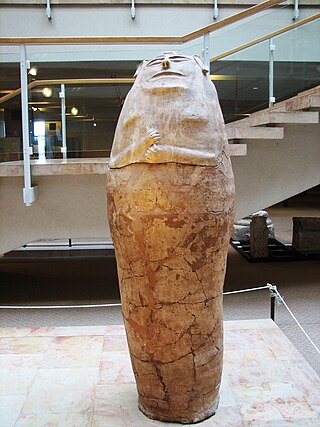
The Reuben and Edith Hecht Museum is a museum located on the grounds of the University of Haifa, Israel.
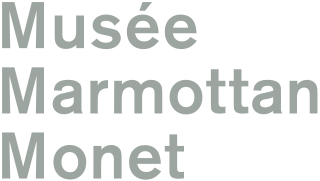
Musée Marmottan Monet is an art museum in Paris, France, dedicated to artist Claude Monet. The collection features over three hundred Impressionist and Post-Impressionist paintings by Claude Monet, including his 1872 Impression, Sunrise. The museum's fame is the result of a donation in 1966 by Michel Monet, Claude's second son and only heir.

The Foundation E. G. Bührle Collection is an art museum in Zürich, Switzerland. It was established by the Bührle family to make Emil Georg Bührle's collection of European sculptures and paintings available to the public. The museum is in a villa adjoining Bührle's former home. In 2021 many works were exhibited on 20-year loan in almost a whole floor of the new extension of the Kunsthaus Zürich museum. There was controversy due to suspicions that many works were looted from Jews by Nazi Germany. The foundation was managed for decades by Bührle's son Dieter, who was sentenced to a conditional prison term of 8 months in 1970 for supplying weapons to the racist apartheid regime in South Africa.

The National Museum of Western Art is the premier public art gallery in Japan specializing in art from the Western tradition.

Adolphe Étienne Auguste Moreau-Nélaton was a French painter, art collector and art historian. His large collection is today held in its entirety by French national museums.

The Museum of Modern Art André Malraux - MuMa is a museum in Le Havre, France containing one of the nation's most extensive collections of impressionist paintings. It was designed by Atelier LWD, an architecture studio led by Guy Lagneau, Michel Weill and Jean Dimitrijevic. It is named after André Malraux, Minister of Culture when the museum was opened in 1961.
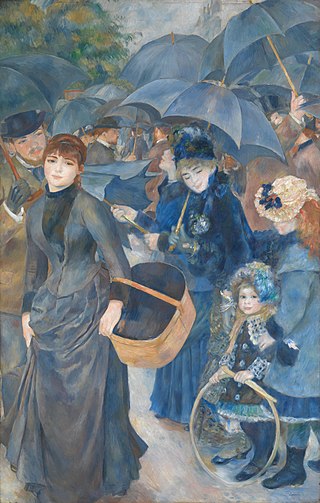
The Lane Bequest is a collection of 39 paintings from the estate of Sir Hugh Lane. The collection is mainly paintings by French 19th-century artists, including several by the Impressionists, including masterpieces such as Manet's Music in the Tuileries (1862) and Renoir's The Umbrellas (c.1881), along with many more modest works. The collection is owned by the National Gallery, London, but most of the paintings are now displayed at the Hugh Lane Gallery in Dublin.

Baron Adolf Kohner Szaszberek was a Hungarian businessman, landowner and a leading member of the Jewish community in that country.

Jean-Baptiste-Antoine Guillemet was a French renowned landscape painter and longtime Jury member of the Salon des Artistes Francais. He was one of the first 19th-century artists to paint modern life, and a pivotal figure in the transition from Realism to Impressionism.
Gustav Rau was a German medical doctor, philanthropist and art collector. Rau who was born and died in Stuttgart.
Max Silberberg was a major cultural figure in Breslau, a German Jewish entrepreneur, art collector and patron who was robbed and murdered by the Nazis. His art collection, among the finest of its era, has been the object of numerous restitution claims.

Suzanne Hecht Pontremoli was a French art collector.
Albert Pontremoli, also known as M. Albert Pontremoli,, was a French art collector, lawyer and magistrate of Italian origin.






























